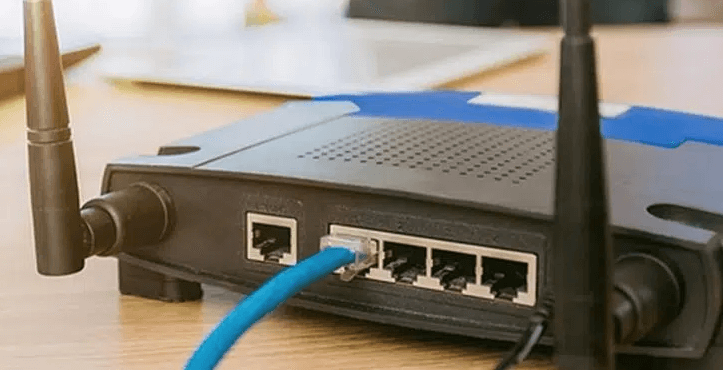Top Tips for a Reliable Home Network Setup

A reliable home network is more important than ever in today’s connected world. Whether you work from home, stream entertainment, or manage smart devices, your network’s stability and speed are crucial. Setting up a dependable home network involves more than just plugging in a router and connecting your devices. This comprehensive guide will walk you through the essential steps and provide expert tips to ensure your home network is as reliable as possible.
Understanding Your Home Network Needs
Before diving into the setup, it’s essential to assess your household’s network requirements. Consider the number of devices that will be connected simultaneously, including smartphones, computers, smart TVs, gaming consoles, and IoT (Internet of Things) devices like smart thermostats or security cameras. Understanding your usage patterns will help you select the right equipment and configure your network for optimal performance.
Choosing the Right Router for Your Home
The router is the heart of your home network, and selecting the right one is crucial for reliability. When choosing a router, consider factors such as speed, coverage, and the number of available ports. Look for a router that supports the latest Wi-Fi standards (Wi-Fi 6 is the current standard as of 2024) to ensure compatibility with newer devices and faster speeds.
Additionally, mesh Wi-Fi systems are worth considering if you have a large home or areas with weak signals. These systems use multiple nodes to provide consistent coverage throughout your house, eliminating dead zones and ensuring a stable connection.
Positioning Your Router for Optimal Coverage
Where you place your router can significantly impact your network’s performance. To maximize coverage, position your router in a central location, ideally on the main floor of your home. Avoid placing it near thick walls, metal objects, or other electronics that might interfere with the signal. Elevating the router on a shelf or mounting it on a wall can also help improve signal distribution.
Securing Your Home Network
Security is a critical aspect of a reliable home network setup. An unsecured network can leave your personal data vulnerable to hackers and unauthorized users. Start by changing the default login credentials for your router, as these are often easy targets for cybercriminals.
Enable WPA3 encryption, the latest and most secure wireless encryption standard, to protect your Wi-Fi network. Additionally, consider setting up a guest network for visitors to prevent them from accessing your main network. Regularly updating your router’s firmware is another crucial step to protect against security vulnerabilities.
Optimizing Network Performance
To ensure your home network performs at its best, consider these optimization tips:
- Prioritize Devices: Many routers allow you to prioritize specific devices, ensuring they get more bandwidth when needed. This is particularly useful if you have a household with gamers or remote workers who need consistent, high-speed connections.
- Channel Selection: Wi-Fi networks operate on different channels, and interference from neighboring networks can slow down your connection. Use your router’s settings to manually select the least congested channel, or let your router automatically choose the best one.
- Quality of Service (QoS) Settings: QoS allows you to prioritize specific types of traffic, such as streaming or gaming, over others. Configuring QoS can reduce latency and ensure a smoother experience for high-demand applications.
- Reduce Interference: Electronic devices like microwaves, baby monitors, and cordless phones can interfere with Wi-Fi signals. Keep your router away from these devices to minimize disruptions.
Expanding Network Coverage
If certain areas of your home suffer from weak Wi-Fi signals, consider expanding your network coverage. Wi-Fi extenders, powerline adapters, and mesh systems are all viable options for extending coverage to hard-to-reach areas. Each of these solutions has its pros and cons, so choose the one that best suits your home’s layout and your network’s needs.
Ethernet vs. Wi-Fi: When to Use Wired Connections
While Wi-Fi offers the convenience of wireless connectivity, Ethernet connections are often more reliable and faster. For devices that require high-speed internet, such as gaming consoles, desktop computers, or smart TVs, a wired connection is ideal. Use Ethernet cables to connect these devices directly to your router, reducing latency and improving overall performance.
Setting Up a Guest Network
A guest network is a separate Wi-Fi network that you can provide to visitors, keeping your main network more secure. This prevents guests from accessing your personal devices or network files. Most modern routers allow you to set up a guest network easily through the settings interface. Make sure to use a strong password for the guest network to keep it secure.
Managing Network Traffic
During peak usage times, network traffic can slow down your internet speed. To manage this, you can use your router’s traffic management tools to allocate bandwidth more effectively. Some routers offer apps that allow you to monitor and control network traffic, helping you to identify and manage any bottlenecks.
Troubleshooting Common Network Issues
Even with the best setup, network issues can arise. Here are some common problems and how to fix them:
- Slow Speeds: If your network is slower than expected, start by rebooting your router. Check for interference from other devices and ensure that your router’s firmware is up-to-date.
- Dropped Connections: Dropped connections can be caused by a variety of issues, including signal interference, outdated firmware, or too many devices on the network. Try moving your router to a better location, updating the firmware, or reducing the number of connected devices.
- Weak Signal in Certain Areas: If you’re experiencing weak signals in certain parts of your home, consider adding a Wi-Fi extender or upgrading to a mesh system.
Maintaining Your Home Network
Once your home network is set up and running smoothly, it’s important to maintain it. Regularly update your router’s firmware to protect against security vulnerabilities and improve performance. Periodically check your network’s speed and make adjustments as needed. Keep an eye on connected devices and remove any that are no longer in use to free up bandwidth.
Integrating Smart Home Devices
As smart home devices become more common, integrating them into your network can be challenging. To ensure reliable connectivity for devices like smart thermostats, cameras, and lights, make sure your router can handle multiple connections simultaneously. Consider setting up a separate network for your smart home devices to keep them isolated from your primary network, which can enhance both security and performance.
Backup Solutions for Your Network Settings
To avoid losing your network settings during a power outage or a router reset, it’s wise to back up your configuration. Many routers offer an option to save your settings to a file, which you can restore if needed. This can save time and hassle if you need to reconfigure your network.
Future-Proofing Your Home Network
Technology is always evolving, and your network setup should be able to adapt to future changes. Invest in a router that supports the latest standards, such as Wi-Fi 6 or even Wi-Fi 7, to ensure your network remains compatible with new devices. Additionally, keep an eye on emerging technologies like 5G home internet, which may offer faster and more reliable connections in the future.
Balancing Speed and Security
While it’s important to prioritize speed, don’t neglect security in your home network setup. Balancing both aspects ensures that you enjoy fast internet without compromising your data’s safety. Regularly review your network’s security settings and update your passwords to maintain a secure environment.
Setting Parental Controls
For families with children, setting up parental controls on your network can be a crucial step. Most modern routers offer parental control features that allow you to restrict access to certain websites, set time limits for internet use, and monitor your child’s online activity. This helps ensure a safer online environment for younger users.
The Role of ISPs in Network Reliability
Your Internet Service Provider (ISP) plays a significant role in the reliability of your home network. When choosing an ISP, consider factors like speed, customer service, and uptime guarantees. If you experience frequent outages or slow speeds, it might be worth exploring other providers or upgrading to a higher-speed plan.
Investing in Quality Hardware
The quality of your network hardware, including routers, switches, and cables, can significantly impact the reliability of your home network. Don’t skimp on these components; investing in high-quality hardware can save you from headaches and ensure a stable connection.
External Storage Solutions
For homes with multiple users or large amounts of data, setting up external storage solutions like Network Attached Storage (NAS) can be beneficial. A NAS device allows you to store and share files across your network, providing a central location for backups, media, and important documents. This not only frees up space on individual devices but also enhances the overall functionality of your network.
Monitoring and Managing Bandwidth
Bandwidth management is essential in households with many connected devices. Use your router’s bandwidth management features to monitor and allocate bandwidth according to your needs. This prevents any one device from hogging the connection, ensuring smooth performance for everyone.
Common Network Myths Debunked
There are several myths surrounding home network setups that can lead to confusion. For example, many believe that placing a router in the corner of the house will provide better coverage, but this often results in poor signal strength in certain areas. Understanding and debunking these myths can help you avoid common pitfalls and set up a more reliable network.
- FAQs
What is the best location for my router?
The best location for your router is a central, elevated position in your home, free from obstructions like walls or large appliances that could interfere with the signal.
How can I improve Wi-Fi coverage in a large house?
To improve Wi-Fi coverage in a large house, consider using a mesh Wi-Fi system, which uses multiple nodes to provide consistent coverage throughout your home.




